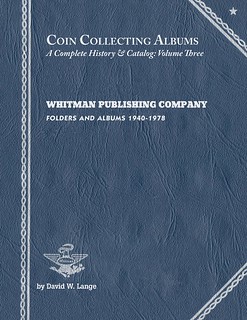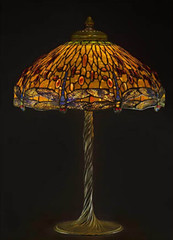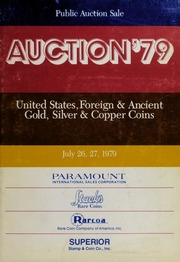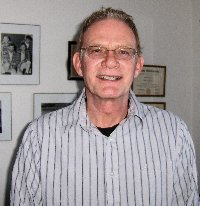
PREV ARTICLE
NEXT ARTICLE
FULL ISSUE
PREV FULL ISSUE
NOTES FROM E-SYLUM READERS: AUGUST 30, 2020 Whitman Folder Books Now Shipping
"The book weighs in at four pounds, and the entire shipment came in at 1500 pounds. Neighbors were treated to the sight of the delivery driver and I struggling to push the palette up my driveway. I'm attaching a photo of the end result. "Despite all the work and the delays, I'm very pleased with the finished product."
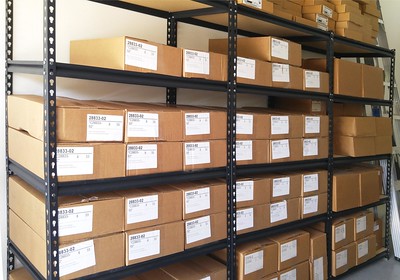
See the earlier articles for ordering information. Remember, the pre-publication price reported in the first article has expired. This looks like a wonderful book, and I'm awaiting my copy. -Editor
To read the earlier E-Sylum articles, see:
Tiffany's Gold Coin Melts Last week I traded emails with Dan Hamelberg over a non-numismatic topic we both enjoy: stained glass. I'd sent him an article I'd seen on "slag glass", a term I was unfamiliar with. Dan shared a numismatic connection I don't think we've discussed here before, so here are his comments on the article. -Editor
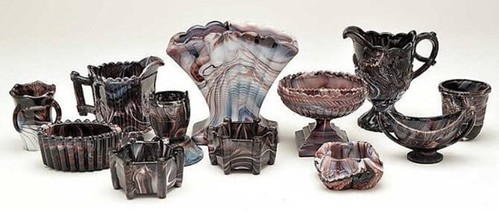
Dan writes:
Interesting. No rarities, I hope! Thanks. -Editor
To read the complete article, see:
Don Partrick and the Brasher That Got Away 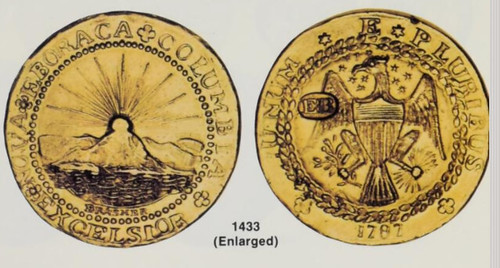
Dennis Forgue writes:
"It was a thrill to open up the package and be able to actually view the first Brasher to be sold at auction since the 1922 Ten Eyck sale. I first thought how small it was, but picking it up and seeing the thickness and the weight of it surprised me. Writing the catalogue was a thrill, but being the auctioneer during the sale was even better. "I was at the podium with Ed Milas who was on my left working the book. The. Room was packed and there were several TV cameras present. Walter Perschke from Chicago was directly in front of me in the second or third row. He was the surprise bidder in the sale. Before the sale, Don Partrick told me that he would be bidding on the Brasher as long as his pen was in his shirt pocket. He sat at the end of the first row next to John Ford. No one could see that he was bidding, including Ed. Perschke was was also bidding with his pen held up waist high without moving. No one in the room knew who the final two bidders were. People were straining to see and Don Kagin even stood on a chair to try and see. Ed Milas very excitedly was asking me “who was bidding?” He did not know about Don's secret method, and did not see Perschke's pen. Margo Russell was taking photos behind me and she was the only other person that saw Perschke bidding. "Don finally removed his pen from his pocket and Walter became the owner of the most expensive coin ever sold at that time. Don finally obtained his Brasher a few months later."
Great story. Thanks! I reached out to Alan Weinberg, knowing he was probably in the room at the time. -Editor Alan writes: "I was indeed there, two rows directly behind Perschke. This Ten Eyck Brasher, much better struck than the higher-graded Stickney-Garrett specimen that sold to Partrick in 1980 with Art Kagin his immediate underbidder. I was standing alongside of Art in the rear of that auction room. This was the very same Brasher that Dick Picker offered me out of the Brand estate in June 1962 at $14K, the month I graduated from high school. Days thereafter, Dick sold it to Jack Friedberg when I should have asked my Dad to help. "Anyway, seconds after Walter Perschke won the “Apostrophe” RARCOA Brasher, Walter rose and stormed out of the auction room, a movement he duplicated decades later when Heritage auctioned it for less than the $6-7M Walter had anticipated. "I also think that Partrick's secret bidding was based on a convoluted “negative“ technique of keeping his pen IN his shirt pocket to indicate he WAS still bidding. More than one advanced bidder like Ford and Bass have lost in bidding as their secret bidding signals were too convoluted. "A few years ago I was astonished to find that Ford in 1959, three years before Picker offered me the Brasher, had written Michael Zeddies, Virgil Brand's nephew, to say that he'd heard “my friend Dick Picker was again pursuing “the Ten Eyck Brasher and offered Zeddies $10K “which is not nickels and dimes“ for it. Zeddies apparently declined and sold it thru Picker in the summer of 1962 for $4K more. "I was amused by the tone of Ford's letter to Zeddies in classic Ford style. This letter and other Ford correspondence appeared as one lot in Stack's Ford Library part II. That letter's content is in tiny italics below the lot description."
To see the Auction '79 catalog on the Newman Numismatic Portal:
To read the earlier E-Sylum articles, see:
Buried With Two Half Cents "My local newspaper has a column each day of things that happened on that date. In the Aug. 27 paper, 100 years ago, was an account that workmen while excavating found bones of a man buried there many years before. In the eye sockets they found two old half cents. I knew that this was an ancient practice, but I had no idea that it was still being done in the 19th century."
Who says you can't take it with you? I don't know when this practice died out, but coins were certainly placed on the eyes of the deceased well into the 19th century. See the earlier E-Sylum article linked below about coins placed on the eyes of the assassinated President Abraham Lincoln. -Editor
To read the earlier E-Sylum article, see:
Craig Alan Keplinger (1948-2020)
Christopher Baker passed along this obituary of coin dealer Craig Keplinger. Thanks. -Editor
Craig was born October 24, 1948 in Kendallville, Indiana, the son of Carl and Carolyn (Kiefer) Keplinger. He was a graduate of Hartford City (Indiana) High School. Craig played piano in “The Greenbriers”, a well-known musical group in Hartford City. Craig received a bachelor's degree and a master's degree in science from Duke University. Craig was a biomedical engineer at VAMC for many years. When he retired Craig owned and operated Keplinger World Coins.
To read the complete article, see:
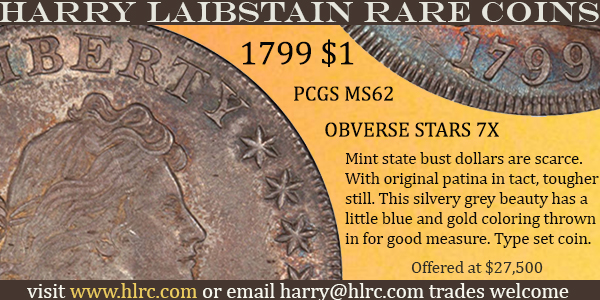
Wayne Homren, Editor The Numismatic Bibliomania Society is a non-profit organization promoting numismatic literature. See our web site at coinbooks.org. To submit items for publication in The E-Sylum, write to the Editor at this address: whomren@gmail.com To subscribe go to: https://my.binhost.com/lists/listinfo/esylum All Rights Reserved. NBS Home Page Contact the NBS webmaster 
|
